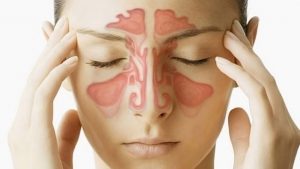Osteopathy is a manual therapy with a holistic view of the human body – with benefits recognized by the World Health Organization – with the aim of restoring the balance of structures and systems of human anatomy (joints, muscles, ligaments, fascia, viscera, nervous tissue , vascular and lymphatic). It is an effective non-invasive therapy not only in case of illness but also in the preventive phase. His holistic view of the organism, in which everything is connected and related, makes the therapist focus not on the problem, but mainly on its causes.
In this Advanced Course in Complementary Osteopathic Techniques, a line of teaching is created centered on students, promoting a culture of research and critical reflection that develops and integrates knowledge and skills of basic sciences, osteopathic principles and Ayurvedic knowledge. This learning model has an evolutionary character in which a bridge is built between scientific knowledge and clinical practice as the different modules of the course progress curricularly.
Through supervised training, it is intended that students acquire professional skills in the field of musculoskeletal care, in order to become able to exercise in different professional contexts, individually or actively participating in multidisciplinary teams, with a responsible and ethical attitude in performance, ensuring the safety, effectiveness and quality of its services to users. This advanced course allows a functional integration of practical knowledge that will enable trainees to complement their knowledge and act in different areas of specific intervention, including: sports, paediatrics, obstetrics and geriatrics.
The Advanced Course in Complementary Osteopathic Techniques is a 222-hour training course and can be attended as a whole, or each module as an individual and independent training.
As the name implies, this course is not intended to replace a degree in Osteopathy, nor does it allow access to the profession of Osteopath, but rather to provide knowledge of the most used complementary techniques.
Payment modalities
100€ pre-registration + 2249€ or 11 instalments of 211€ (to be paid until the 10th of each month)
This course is not intended to replace a degree in Osteopathy, nor does it allow access to the profession of Osteopath, but rather to provide some of the most used complementary techniques in this profession internationally. It is necessary to consider that this is a challenging course with moments of theoretical and practical evaluation throughout the training.
It is recommended to have some knowledge of Anatomy and Physiology for a correct application and understanding of the therapies and techniques involved.
Payment must be made by bank transfer to IBAN:
PT50 0007 0000 0029 0422 07523
HOLDER: Centro de Ayurveda
(David Ferreira)
It is essential to send proof of payment to the email:

Anatomy and Physiology
This 20-hour training course aims at describing the components of the human organism, detailing their functions and groupings, and increasing the students’ anatomical-descriptive vocabulary.

Fascial Manipulation
During 42 hours fascial manipulation techniques will be taught that benefit pain relief, the re-establishment of movement, the relief of tension, circulation, the reduction of oedemas and many others.

Mobilisations and Musculoskeletal Manipulations
In these 64 hours, it will be possible to learn techniques of mobilisation and manipulation of joints, muscles, and other anatomical structures capable of restoring mobility to the body in areas that are blocked and suffer from rigidity.

Craniosacral Therapy
In these 42 hours, you will be able to learn this therapy which is applied in a very gentle and non-invasive way with very productive results and which constitutes a fundamental therapy within osteopathy.

Clinical Practice Seminars
A cycle of 5 seminars approaching clinical practice in Osteopathy aimed at dealing with specific situations. It brings together a set of knowledge and is intended to provide the trainee with specific osteopathic protocols as tools to deal with common problems in clinical practice.

Ayurvedic Complementary Treatments for the Spine
During these 20 hours, you will be able to learn about Ayurveda’s contribution to the health of the spinal column and apply some of its ancient treatment protocols for dorsalgia and other clinical situations.
